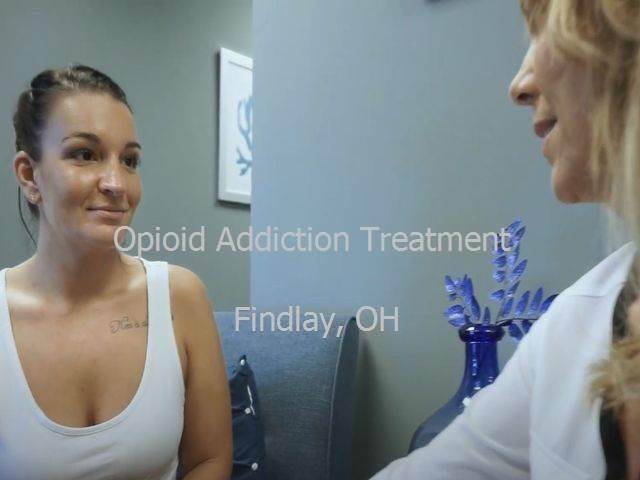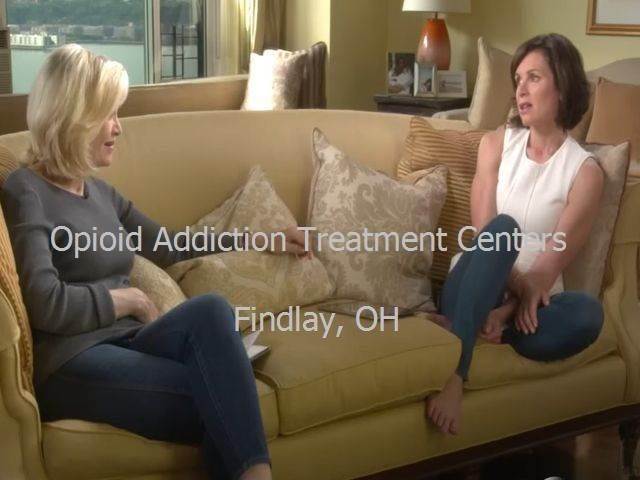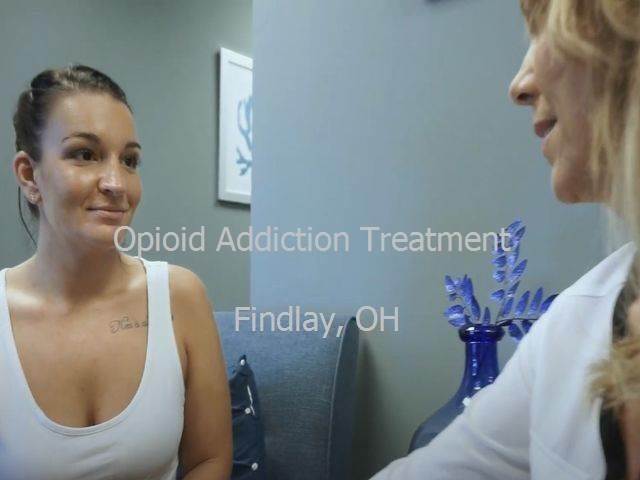Opioid use disorder is a health issue that impacts many people in the United States nowadays. Tens of countless people die from opioid overdose every year, and a lot more are battling with opioid addiction. Unfortunately, instead of going to the healthcare facility to get treatment for substance abuse brings a bad stigma, people attempt to combat the addiction by themselves. This frequently leads to failure and regression.
The problem of opioid use disorder in Findlay, Ohio

Although, nowadays, effective treatments for opioid misuse are ending up being more available, a great deal of individuals still suffer from this issue. They regularly blame themselves and their absence of self-discipline for the inability to fight drug addiction. In reality, this condition is not a kind of bad behavior or a sign of ethical failure. It is a chronic medical condition that involves significant modifications in certain parts of the brain, a physical dependence that is extremely difficult to fight without expert help. Only just recently, physician came close to understanding the system of opioid addiction and developing much better opioid treatment programs.
The Findlay, Ohio, opioid addiction treatment center provides several ways of treating substance use disorder. Keep checking out to discover the nature of opioid addiction and which types of treatment offer the patients a greater possibility of successful recovery.
Opioid addiction treatment rehabilitation services
National institutes for healthcare established different approaches of helping patients with opioid dependence. Some of them include taking addiction medicine to deal with opioid cravings. In many cases, treatment retention is recommended. It is necessary to openly discuss your circumstance with health care providers to pick the most efficient treatment plan.
Substance abuse treatment consist of several types:
- Treatment retention. Some people wish to get away from the environment that encourages opioid misuse. They can not battle drug abuse when they are surrounded by triggers and their family members or good friends have simple access to opioids. The downside of this technique is the requirement to take a break from work. The positive element of this program is satisfying people with the same struggle and getting their assistance.
- Outpatient opioid addiction treatment. Patients can continue to work and live as they did while getting health and human services. They go to health center for systematic reviews, therapy and medications. This is a less extreme modification of way of life compared to residing in the treatment facilities. Such patients do not risk losing their tasks but require to be responsible about remaining on track.
- Behavioral therapy. This type of treatment includes educating clients on how to make favorable modifications in their habits gotten in touch with opioid use disorders. They get access to the entire series of mental health services such as cognitive behavioral therapy, specific counseling, contingency management, family therapy, support groups, and so on.
- Medication assisted treatment (MAT): medications plus counseling. Whether it is a domestic program or an outpatient health care service, any treatment plan can include taking medications. This type of treatment of opioid misuse has proven to be very effective. Regretfully, it is typically misconstrued and treated with suspicion. Medications that are used to treat opioid addiction come from the group of opioids themselves, so there is a misconception that by taking them you just replace one addiction with another. This is not real for 2 reasons. Initially, the medicines do not produce the euphoric effects unlike other opioid drugs. And 2nd, the data show that using medical assisted therapy assists to significantly lower the variety of deaths from overdose
- The drawback of this kind of treatment is that it is not extensively available. Before the professionals can recommend these medications, they need to go through specific training. And after they finish the course, they can just prescribe this treatment to a limited variety of patients. For that reason, facilities that provide MAT typically have a long waiting list. The benefit of this kind of treatment is that thanks to the medications, the clients do not experience severe withdrawal symptoms. The cravings are not so strong too, so most people remain in treatment and are less likely to regression.
Just an expert clinician educated on substance use disorder can choose the very best treatment. The physician requires to understand and take into consideration all the factors that led an individual to drug abuse and mental health problems. Contact the opioid addiction treatment center in Findlay, Ohio, to get certified assistance.
System of opioid addiction
Opioid drugs hack the reward system of an individual’s brain and make the person feel good if they take opioids. Generally, fulfilling such requirements as consuming or reproduction lead to the release of dopamine. This hormone is accountable for the sensation of enjoyment or complete satisfaction. It rewards people for doing things that are essential for the survival of humankind.
When opioids reach the brain, they connect themselves to specific receptors, which activates the reward system and produces the feeling of high. People want to experience that sensation once again. More significantly, their brain signals them that taking opioids is the most essential thing for their survival. That is how the addiction settles in.
There are two results of this change in the brain:
- The very first one is the advancement of drug tolerance. People need more drugs to reach a state of bliss. Opioid use disorder regularly begins with prescription pain relievers. Sometimes patients increase the dosage of prescription opioids to get high, and this leads to opioid abuse. Some people even change to more powerful drugs like heroin.
- The 2nd result is opioid dependence. Individuals continue substance abuse to prevent withdrawal symptoms. Due to malfunction of the reward system, without the drugs people feel uneasyness and have a horrible state of mind.
Other signs of opiate withdrawal consist of:
- Body aches;
- Absence of sleep;
- Nausea;
- Diarrhoea;
- Goosebumps, and so on.
Understanding about the nature of substance use disorders can help physicians educate their clients on what withdrawal symptoms to anticipate and how to deal with the cravings. Depending upon the client, physicians choose the most effective treatments that might consist of medicine prescription and behavioral therapies. It might not be possible to totally eliminate the opioid addiction, but mental health services can considerably reduce the opioid misuse and the variety of heroin overdose deaths.
Opioid addiction ought to be treated the method one would treat a persistent disease. Individuals struggling with drug addiction are encouraged to join the Findlay, Ohio, rehab programs and enhance their health and overall quality of life. When you give up the drugs, come back for maintenance treatment.
Who can get treatment for opioid abuse in Findlay, OH?

People often feel ashamed to go to the healthcare facility for opioid abuse treatment. There are two main reasons for this: they are either scared to have a bad image in the neighborhood or have actually currently given up on themselves. But these concerns ought to not prevent patients from battling substance use disorders. Anyone is complimentary to reach rehabilitation centers and see what help they can get.
2 main categories of opioid use disorders are treated with Findlay, Ohio, rehab programs:
- Prescription drug abuse. Opioids are normally prescribed in the form of pain relievers for chronic or severe pain. It is possible to establish addiction to these medications. As a result, some clients start to misuse opioids and take larger doses of them. National institutes such as the Center for disease control created suggestions on how to help these patients slowly lessen the drug use.
- Heroin addiction. This disorder routinely stems from the previous one. However some people turn to this drug for recreational functions. Fighting heroin addiction is really hard, and patients should use all the treatment resources they can access. Even then, it typically takes several attempts to beat the condition.
The most effective treatments generally include both mental health services and medications.
Frequently Asked Questions – FAQ
Is opioid addiction a mental illness?
Opioid use disorder is a persistent brain condition. Initially, individuals might rely on drugs because of individual concerns. That is why substance abuse and mental health are often treated simultaneously. Many patients benefit from therapy, behavioral therapies and support groups. But it is very important to keep in mind that opioids make substantial modifications to the brain, making it very hard to combat the addiction without medications.
What medications are used to treat opioid use disorder in Findlay, Ohio?
National institutes approved 3 medications for treatment of opioid drug abuse: methadone, buprenorphine and naltrexone. They have different names and results on the brain. The first two medications change the opiates and smooth the withdrawal symptoms without making the clients high. Naltrexone blocks the mu-opioid receptor, working as an opioid antagonist.
How do I get medication-assisted treatment in Findlay, Ohio?
Just a licensed clinician can recommend you medications for opioid use disorder. Check out the office of a healthcare supplier that completed the essential training and apply for a program of medication-assisted therapy.

